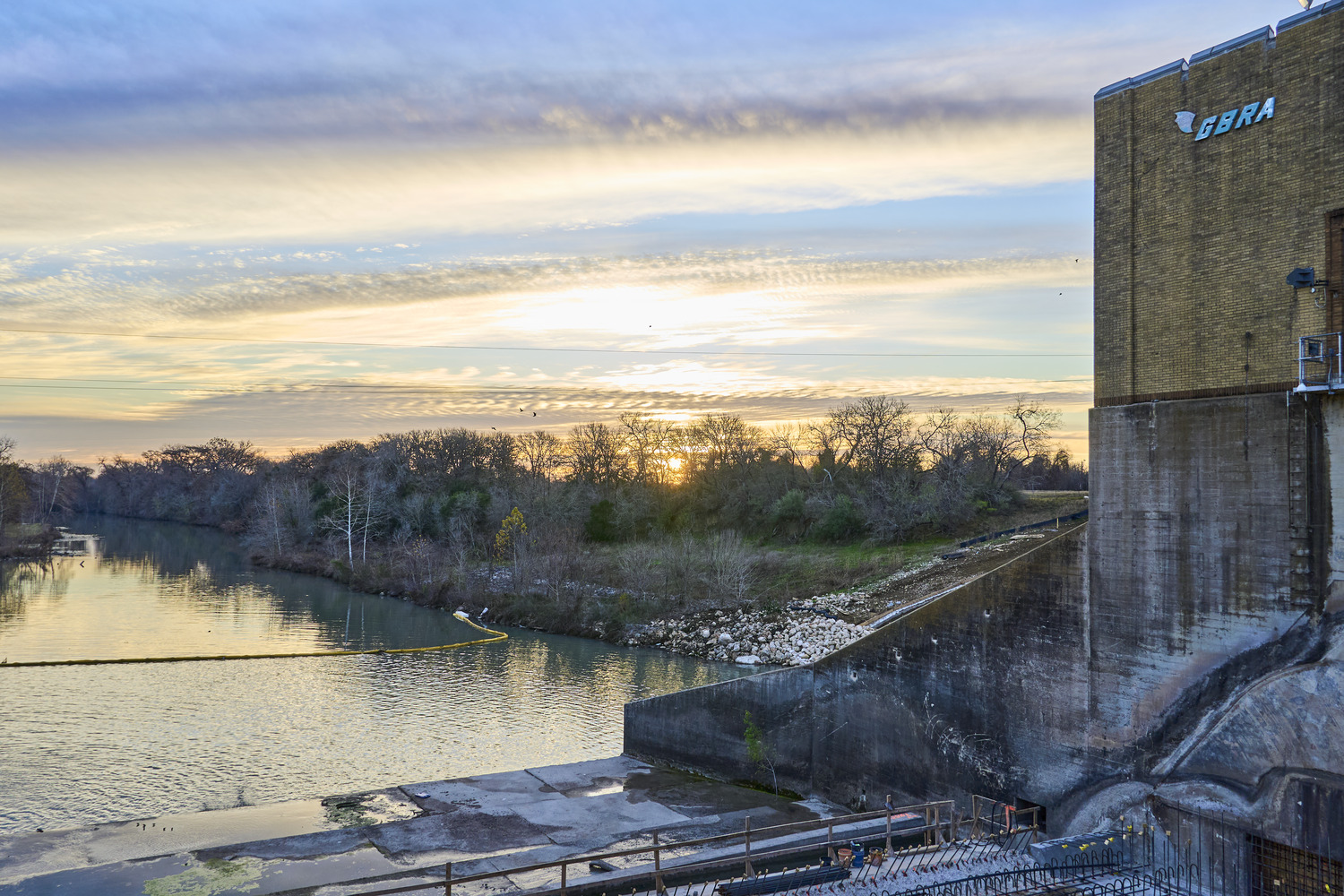Without functioning dam gates, Lake McQueeney and Lake Placid wouldn’t exist. And with the over 90-year-old structures having reached the end of their useful life, the lake’s residents took action to secure funding for the vital improvements that will preserve the lakes for generations to come. Both repair projects will result in the dams resuming hydroelectric power generation and returning lake levels to previous elevations. Once completed, the dams will also enhance safety during flood events by providing overtopping protection.
Sundt has been working closely with the Guadalupe Blanco River Authority (GBRA) and the Water Control and Improvement Districts (WCID) to restore hydroelectric power generation capabilities through new spillgates, and considerable progress has been made since we last checked in. Recent milestones include the completion of key foundation work, cofferdams, spillway slabs, and new piers, as well as ongoing concrete placement and structural enhancements.
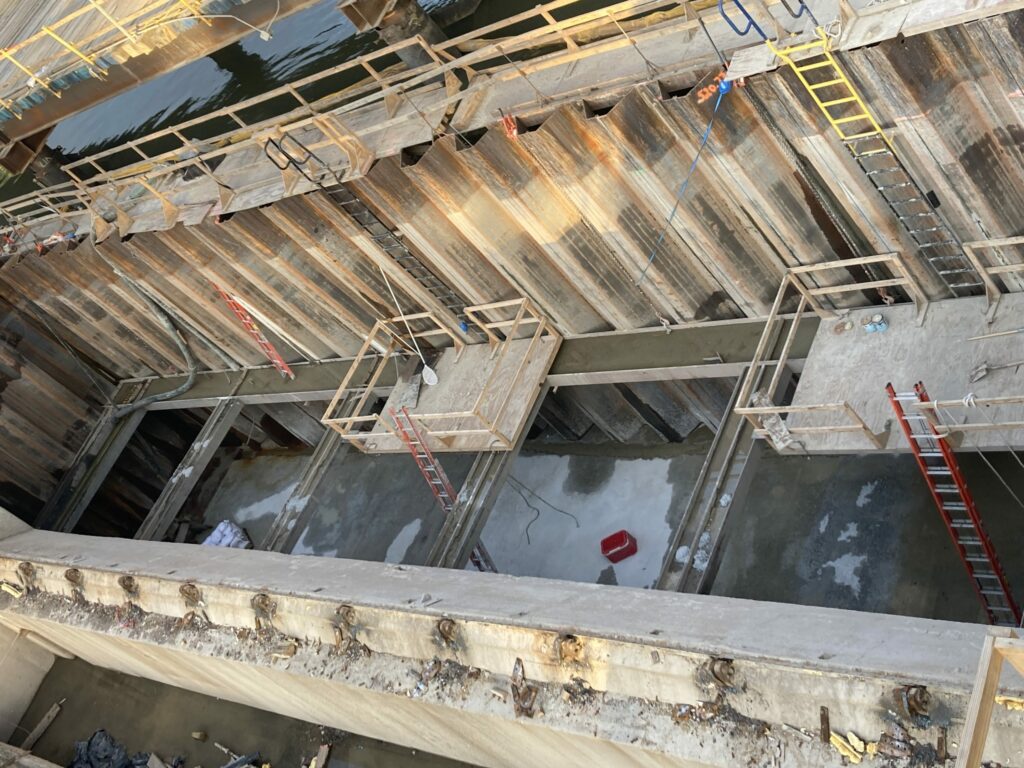
To perform the work within the active waterway, the sheetpile cofferdams pictured above were constructed at both Lake McQueeney and Lake Placid. The cofferdams are then dewatered and structural concrete is placed within these limits. Early in the process of constructing these cofferdams, professional divers go into the water to help seal the concrete wall tie-in points and sheet pile interlocks.
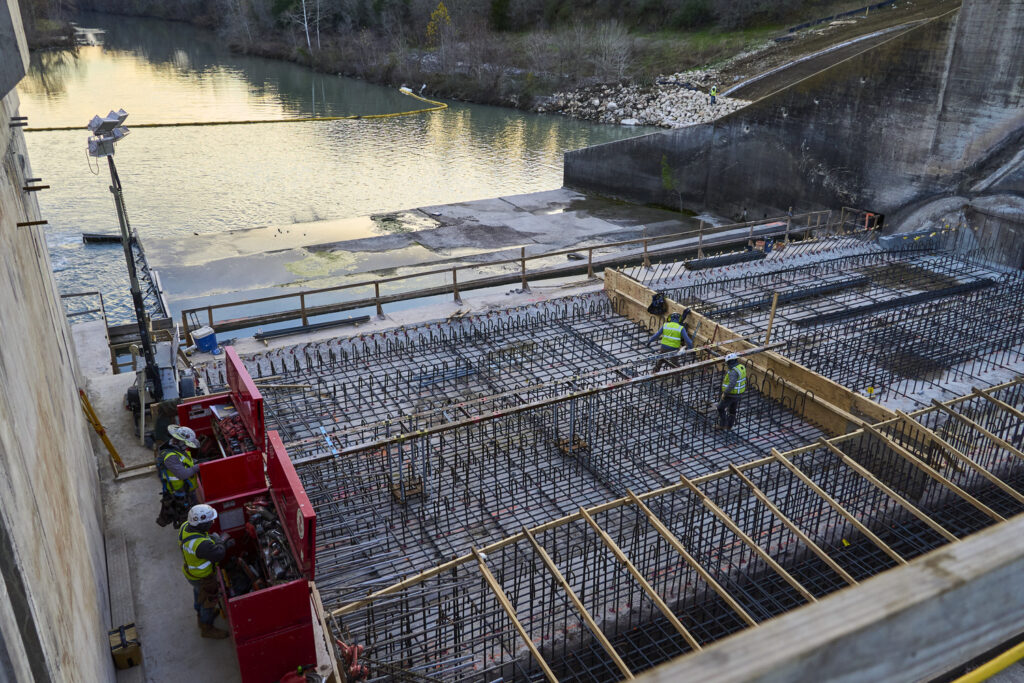
Sundt crew members install the reinforcement bar and formwork for a concrete spillway at the Lake Placid dam. This dense steel reinforcement will ensure that the spillway can withstand high water pressure and resist erosion.

By completion of the project, the team will have installed approximately 2,277 tons of rebar. The project team has already completed bay 01 and are currently constructing the bay 02 bulkhead foundation lifts and structural slabs. At Lake McQueeney, bay 01 has been completed, and the team is currently dewatering, excavating and constructing cofferdams at bay 02 and 03.
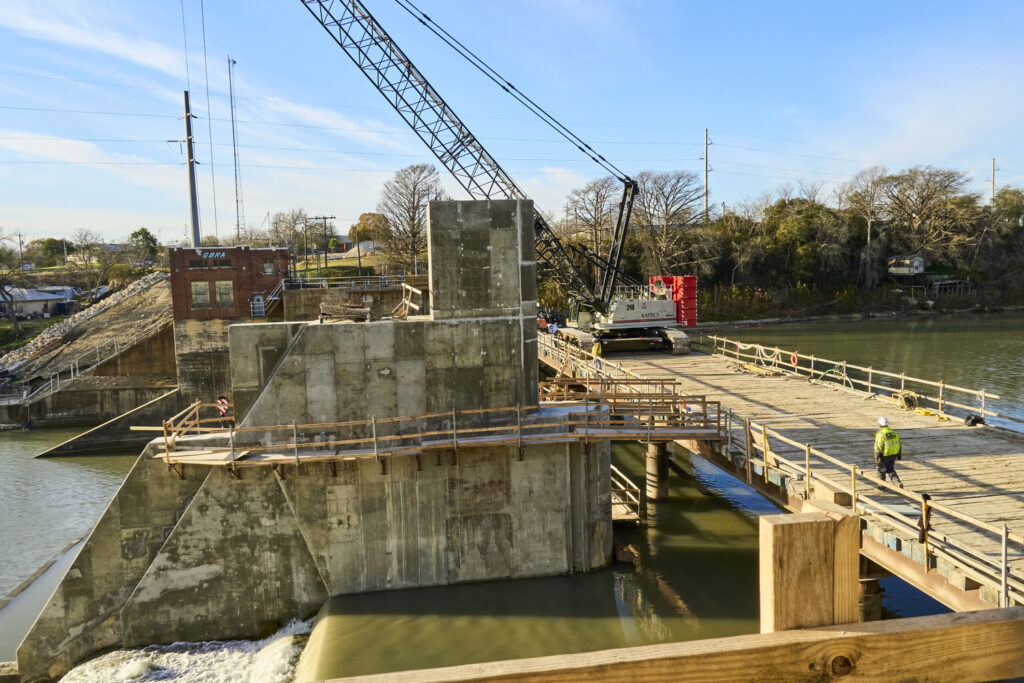
Cranes sit atop temporary work bridges that Sundt constructed, driving sheet pile for the construction of the cofferdams.
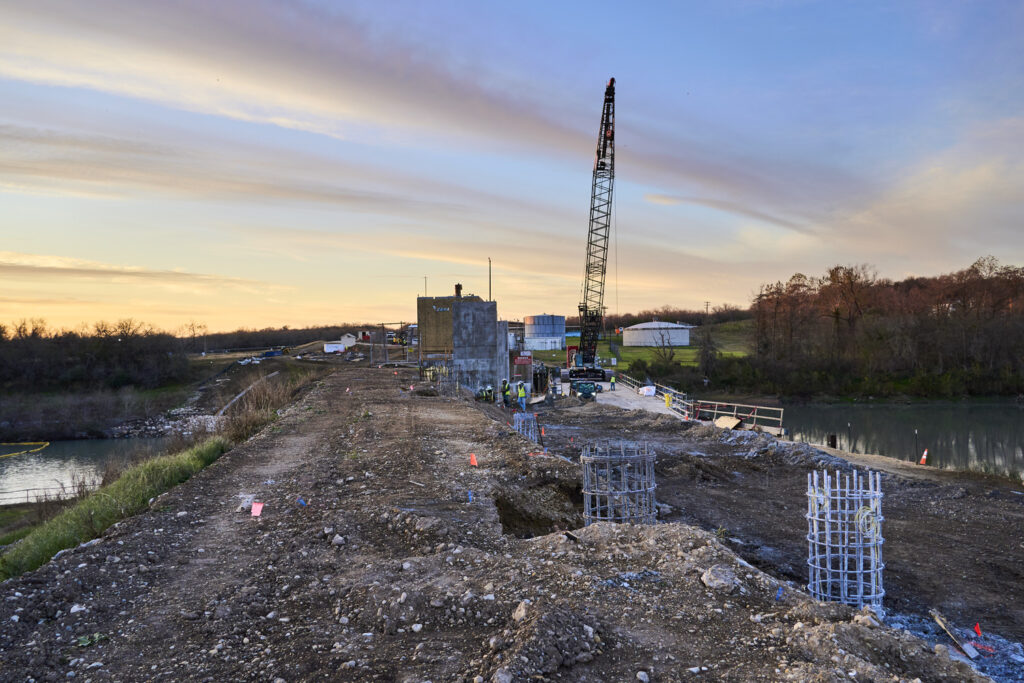
The drilled shafts being constructed, shown above, will support a steel maintenance bridge outfitted with a crane that will allow dam operators to maintain and operate the new crest gates.
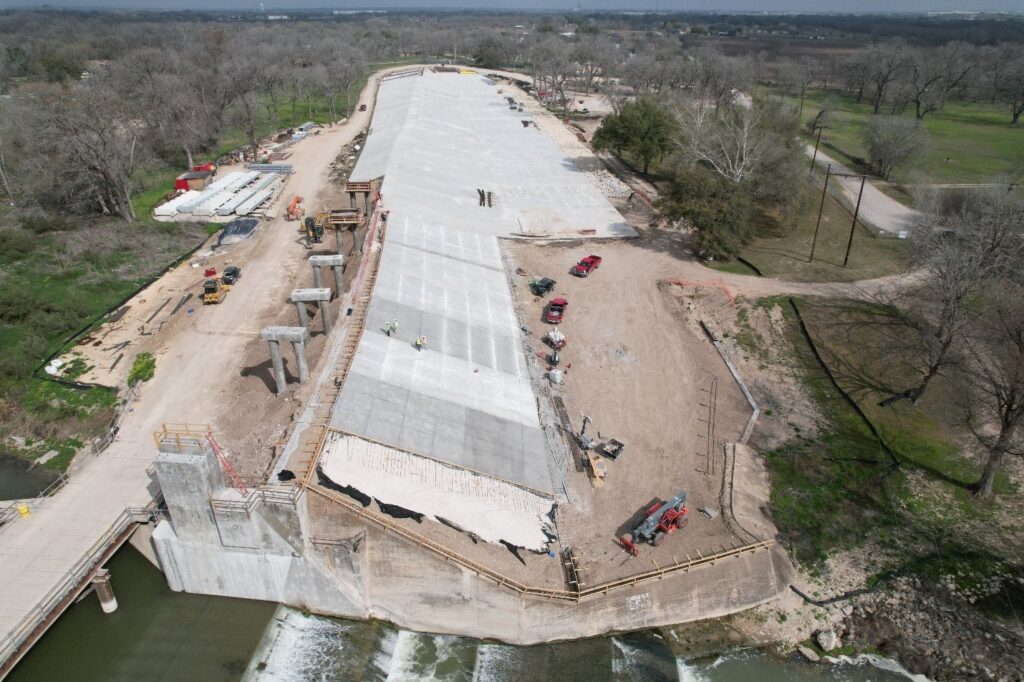
Because the lakes are situated in the 100-year floodplain in Texas, there was a need for a concrete overtopping on the embankment, which will make it more resilient to floods. The project involved enhancing the existing earth-embanked spillways by adding concrete armoring to both dams, providing increased protection against flooding.

The crest gate cylinders that will be installed at Lake Placid, which are approximately 30 feet long and weigh 16,500 pounds each.
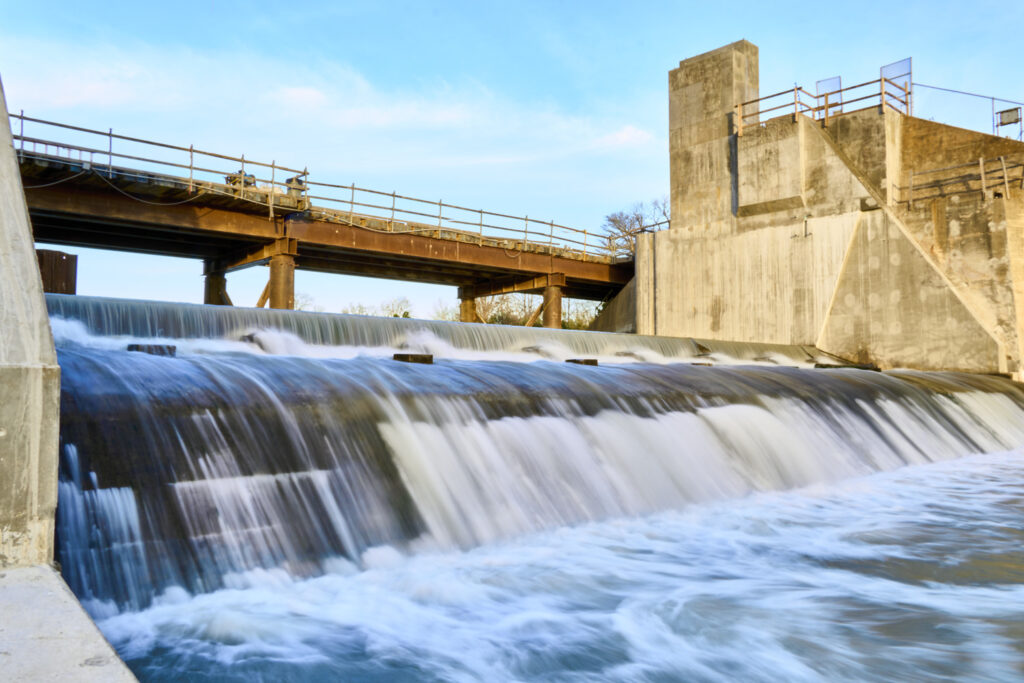
Pictured here is the completed Lake Placid bay 01 spillway. The steel crest gates will be installed between the south abutment and center pier walls. The blocks seen in the picture are temporary anchor bolt grout pads, installed to protect the gates from any debris striking them once the cofferdam was removed and the river was opened back up in this area.
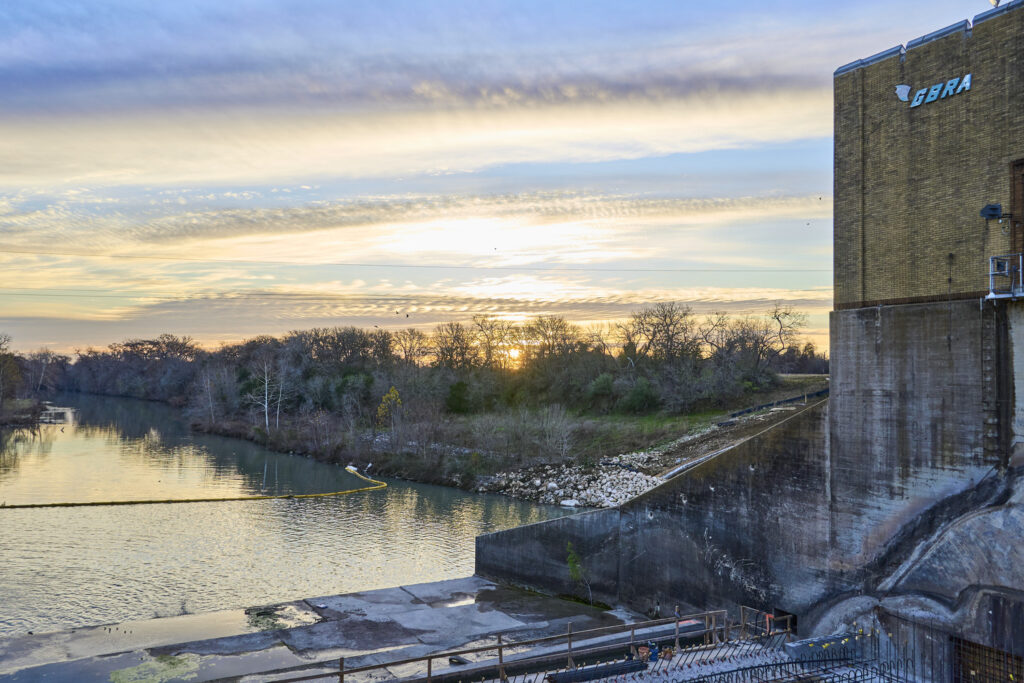
Upcoming work includes the installation of the new hydraulically actuated steel crest gates as well as ongoing armoring of the embankments at both project sites. With the great progress the project team has made so far, the GBRA Lake Placid and Lake McQueeney dams are expected to be complete this fall.
